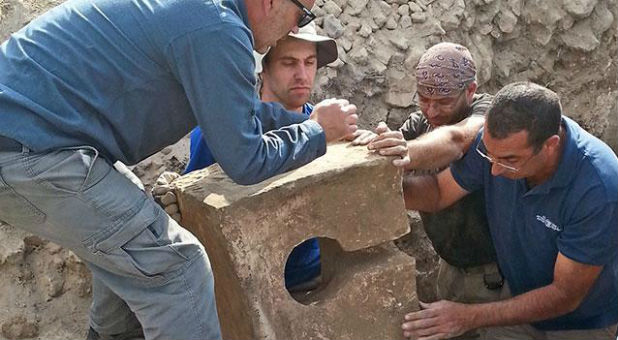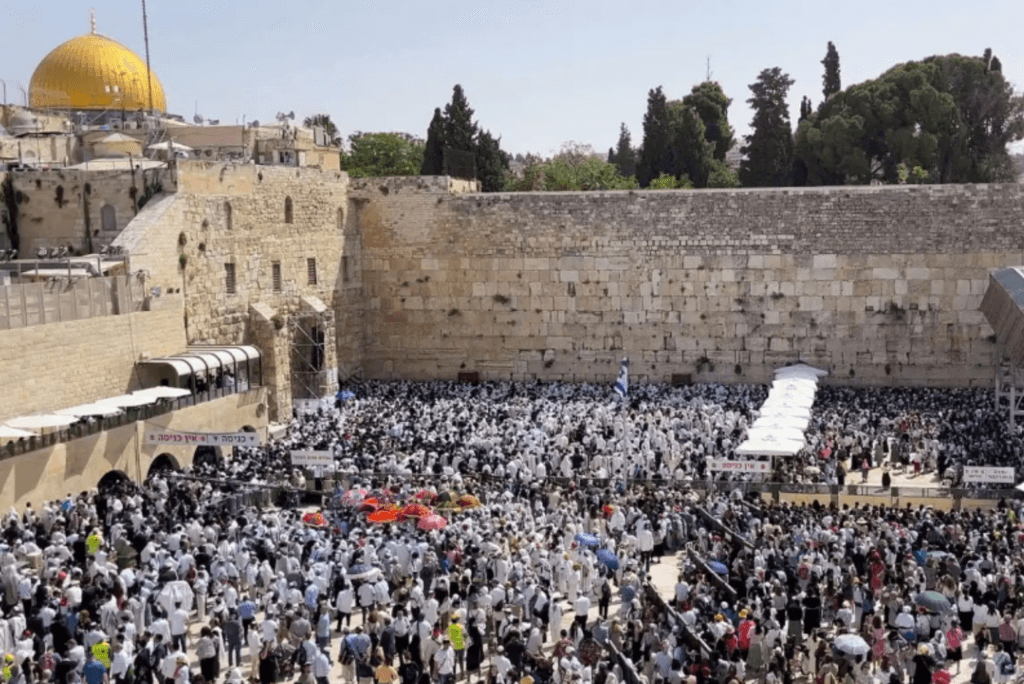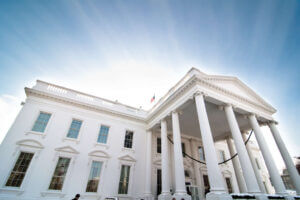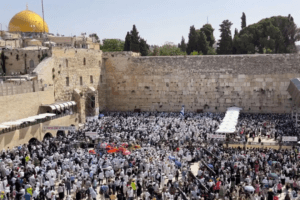Israeli archaeologists believe they have evidence that the biblical King Hezekiah did indeed destroy the high places and idols in the land of Israel as described in the Bible, evidence officials say highlights Israel’s past connection to the land and helps draw the country’s boundaries today.
Calling it “an important and unusual discovery,” the Israel Antiquities Authority said excavations in the Tel Lachish National Park in central Israel revealed a “gate-shrine” from the First Temple period, about the 8th century B.C. It’s the largest known gate from the First Temple period in the country.
The Bible says King Hezekiah “removed the high places, broke down the sacred pillars, cut down the Asherah poles.” (2 Kings 18:4).
“The size of the gate is consistent with the historical and archaeological knowledge we possess, whereby Lachish was a major city and the most important one after Jerusalem,” excavation director Sa’ar Ganor said.
According to the biblical narrative, everything took place at the city gates where the elders, judges, governors, kings and officials sat on benches.
“These benches were found in our excavation,” Ganor said.
The IAA conducted the excavation from January through March at the initiative of the Ministry of Jerusalem and Heritage in cooperation with the Nature and Parks Authority. The excavation completely exposed the gate, which was partially uncovered in a joint Tel Aviv University, British excavation decades ago. The plan is to develop the Tel Lachish National Park.
The 80-by-80-foot Lachish city gate is preserved to a height of 16 feet. It consists of six chambers—three on each side, with the city’s main street passing between them.
Artifacts Reveal Details
Artifacts discovered in its rooms give clues as to how they were used 2,800 years ago. Benches with armrests were in the first chamber. At the foot of the benches were many finds, including jars, scoops for loading grain and jar handles bearing the name of the official or a seal impression indicating they belonged to the king.
The IAA said the jars seem to relate to the kingdom of Judah’s military and administrative preparations for the war against Assyrian King Sennacherib in the late 8th century B.C.
According to Ganor, “A staircase ascended to a large room where there was a bench upon which offerings were placed. An opening was exposed in the corner of the room that led to the holy of holies.”
Ganor said they were excited to find two four-horned altars and scores of ceramic finds, including lamps, bowls and stands in the room. He said the horns on the altar had been “intentionally truncated.”
“That is probably evidence of the religious reform attributed to King Hezekiah, whereby religious worship was centralized in Jerusalem and the cultic high places that were built outside the capital were destroyed,” Ganor said.
Besides cutting off the horns of the altar, apparently Hezekiah had a toilet installed in the “holy of holies” to further signify the abolition of worship and as the “ultimate desecration” of the place.
The “toilet” was a chair-shaped stone with a hole in the middle found in the corner of the room. It was apparently symbolic, as tests showed it had never been used.
According to the IAA, archaeological research has identified stones like this as toilets. The idea of using a toilet to defile cultic locations is even mentioned in the Bible, as in the case of Jehu when he destroyed the cult of Ba’al (2 Kings 10:27). It’s the first time the phenomenon has been confirmed archaeologically.
Israeli officials were excited about the discovery. Minister of Jerusalem and Heritage Ze’ev Elkin said the discovery is an example of how excavations “show us time and time again how biblical tales that are known to us become historical and archaeological stories.”
Culture and Sport Minister Miri Regev said the discovery deepened Israel’s “connection to our ancestors who walked this land.”
“The uncovering of these finds joins a long list of discoveries that enlighten us about our historic past, a past that is manifested in our country’s soil and in the writings of the Book of Books,” Regev said.
“The Bible—the founding book of the Jewish people—draws the country’s boundaries and the heritage of the Jewish people that was exiled from its country and returned to its homeland. It boldly commemorates the way of our forefathers, the prophets, the kings and the judges,” she said.
Shaul Goldstein, director general of the Nature and Parks Authority, said Tel Lachish is one of the most “quintessential places” that offers “proof of Israel’s hold on the its land.”
The gate is currently undergoing a conservation process in preparation to open it to visitors. {eoa}
See an error in this article?
To contact us or to submit an article






















